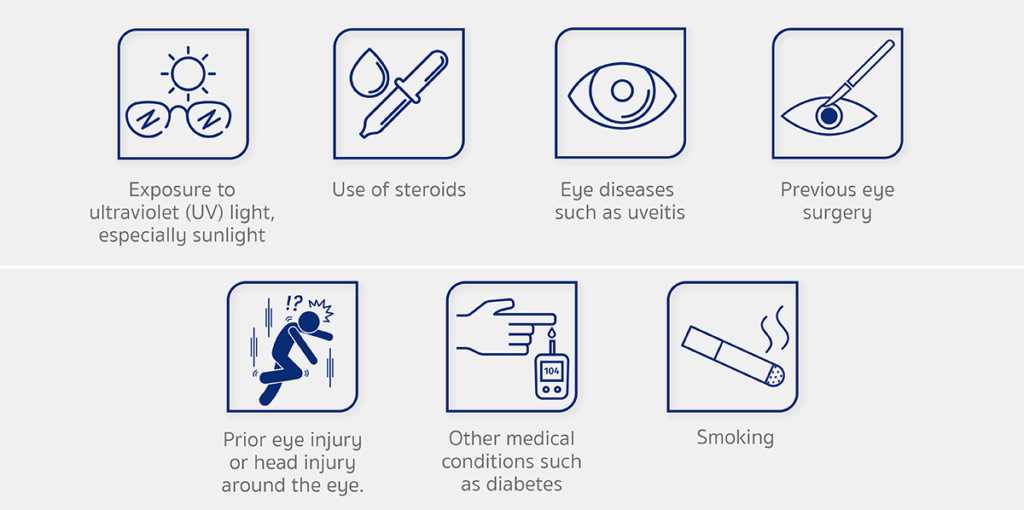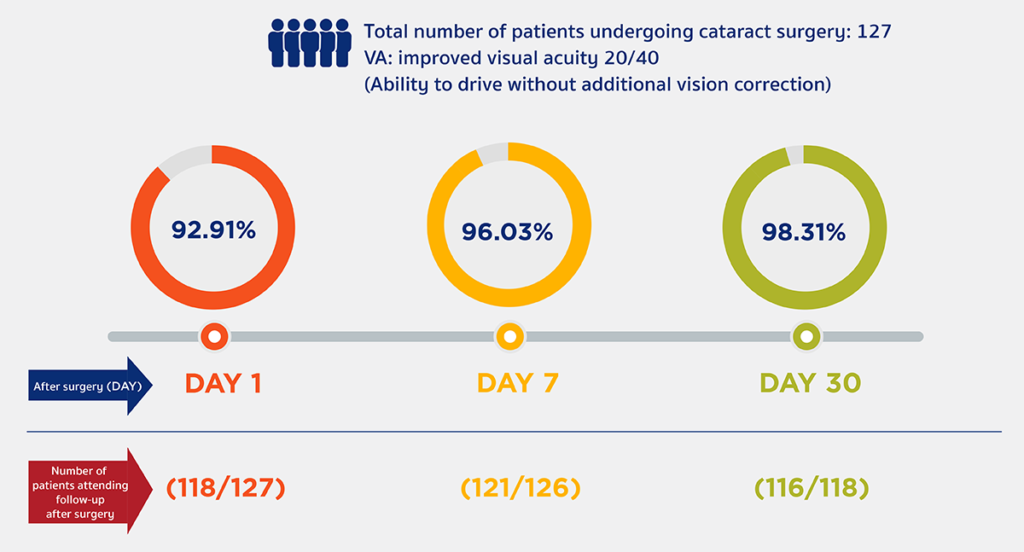What is a “CATARACT”?
A CATARACT is a cloudy lens of the eye that leads to a decrease in vision. It is usually caused by lens degeneration and is most common in people over 55 years of age.

Causes of CATARACT
The major cause of CATARACT is degeneration. However, there are several other factors that increase the risk of CATARACT :
Risk factors that contribute to faster development of CATARACT include :

Symptoms of CATARACT
Most CATARACTS develop slowly. In the beginning, it may cause abnormal vision that can be improved by wearing glasses. But the vision usually gets worse over time and cannot be corrected by wearing glasses.

CATARACT treatment
“Currently, the only effective treatment option is surgery.” There are no drops or oral medications that have been proven in studies to be effective in treating CATARACT.
However, some studies suggest the ways to slow the progression of CATARACT, such as wearing UV blocking sunglasses to reduce excessive UV light exposure or controlling blood sugar levels in people with diabetes.

Principles of CATARACT surgery
CATARACT surgery is generally performed under local anesthesia, either with drops or injections to help relieve pain and reduce eye movement. During the surgery, the patient remains conscious and able to hear the instruments and to interact with the ophthalmologist.
Before surgery, dilating eye drops will be given and the area around the eyes must be cleaned. In the operating room, the patient must lie down on his/her back with the face and chest covered. Only the operated eye is left uncovered.
Principles of CATARACT surgery

The ophthalmologist prepares and makes a small incision at the edge of the cornea. A small tool is used to open a portion of the lens capsule.
Through a small incision, high-frequency ultrasound waves then are used to break the CATARACT in the lens capsule into small pieces.

Once the CATARACT is completely removed, an intraocular lens is inserted into the lens capsule.
The incision is then closed and disinfectant injection is used to prevent infection.
Treatment outcomes for CATARACT patients at Bangkok Hospital from January to December 2021

CATARACT surgery using multifocal intraocular lenses gives patients good far vision and ability to read without glasses (NVA 20/20).

Benchmarking Powe NR, Schein OD, Gieser SC, Tielsch JM, Luthra R, Javitt J, Steinberg EP: Synthesis of the literature on visual acuity and complications following cataract extraction with intraocular lens implantation. Arch Ophthalmol 1994; 112: 239-252.






